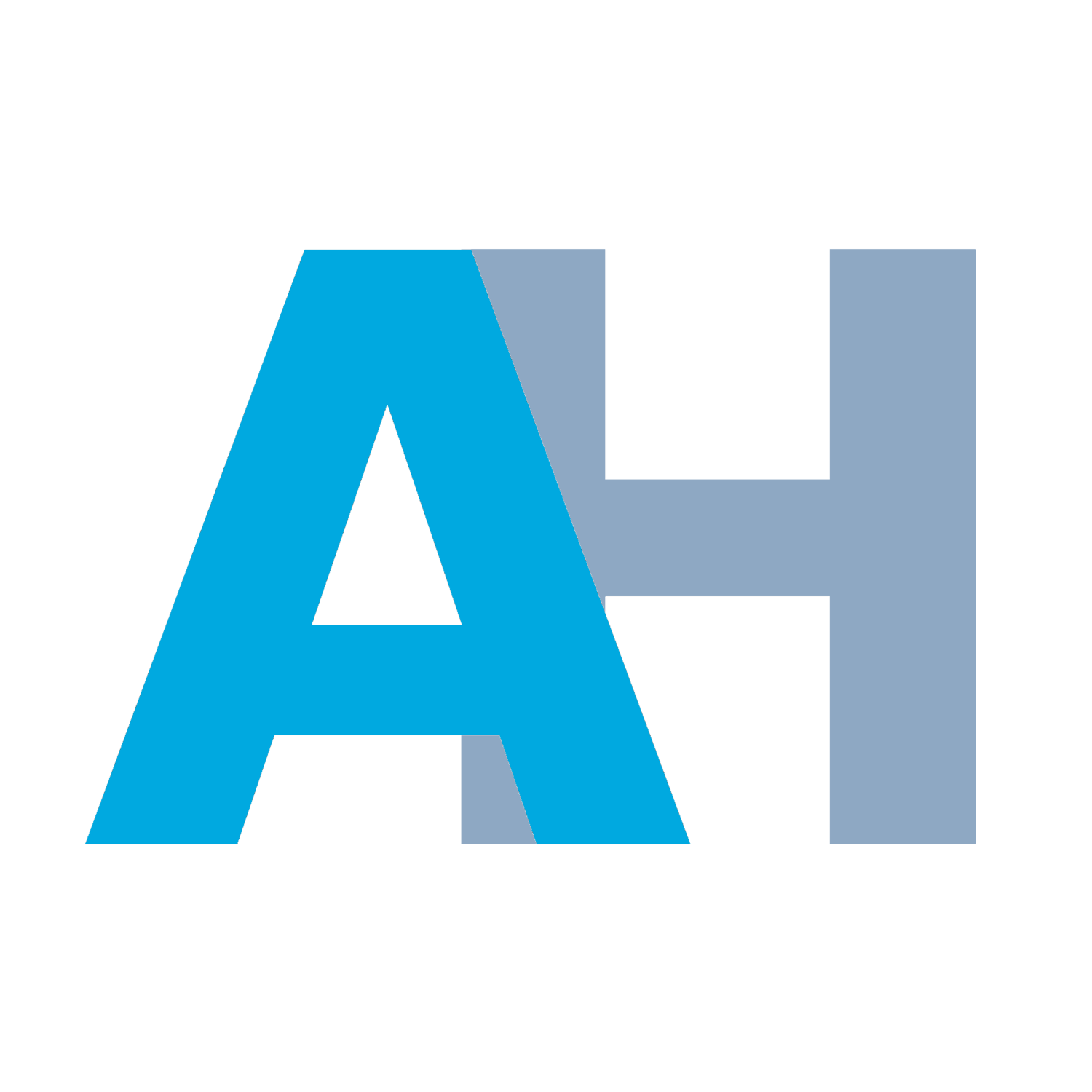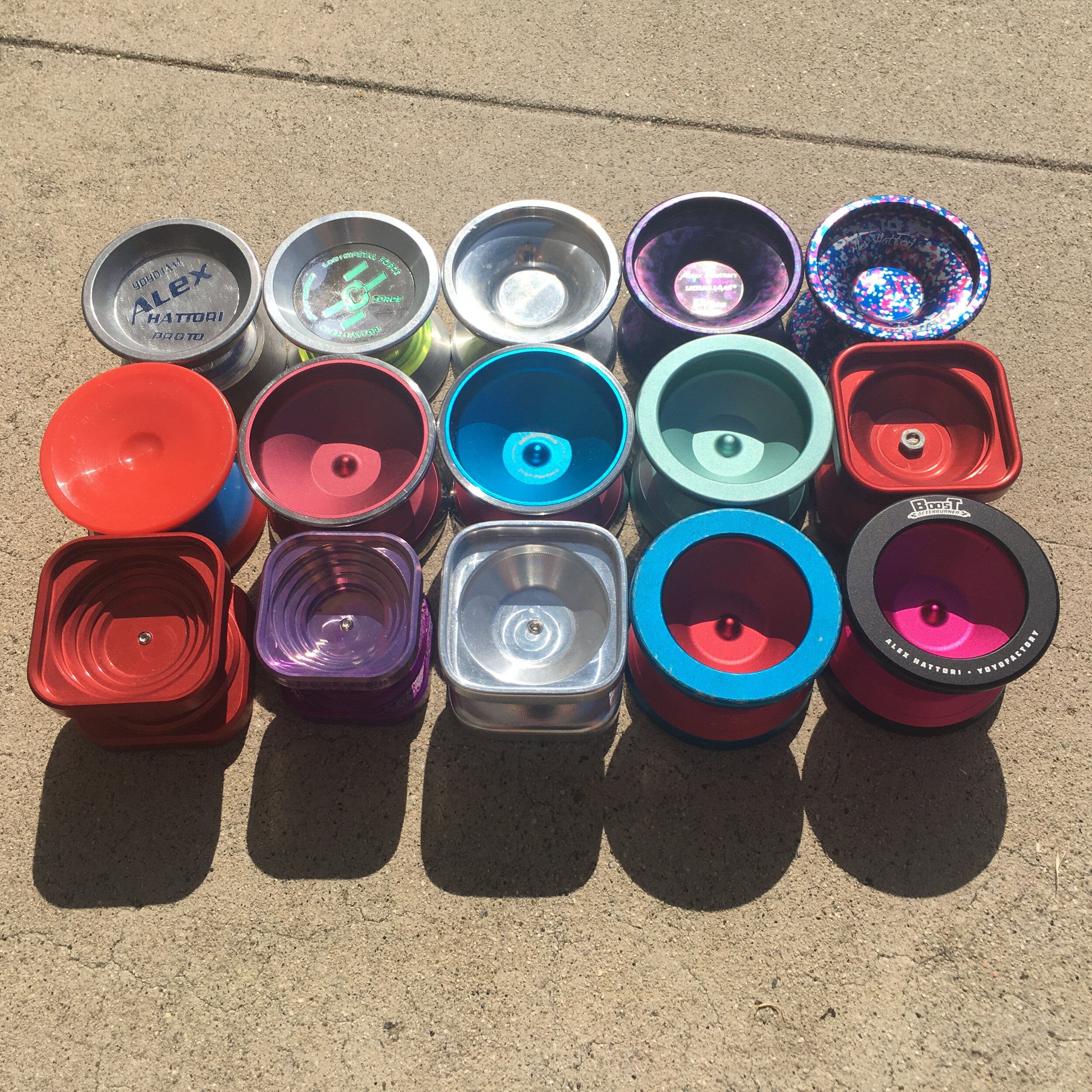My Yo-Yo Designs
I’ve been fortunate enough to have numerous yo-yos I designed produced and sold all around the world since I was 12. Since I have a lot of new designs in the works and being released soon, I thought it might be nice to post some of the history of my designs.
The picture above shows an accumulation of all the mass produced and noteworthy prototypes for mass production yo-yos that are public as of this posting. I wanted to give a brief rundown of them below.
First came the C-Force (short for Centripetal Force) which I produced through YoYoJam, my first sponsor. The prototype is on the left and the production one on the right. This was the first ever yo-yo I helped design back when I was a wee freshman in high school. It’s a hybrid design, with an injection molded polycarbonate center and machined aluminum rings on the outside to maximize the moment of inertia to weight ratio. Additionally, there is an aluminum hub pressed into the bearing area to make a durable bearing seat. The prototype is virtually the same as the production one, with only a retaining feature added to keep the aluminum rings fixed to the body. Retail was ~$50
Next came the Collid3r which was also produced through YoYoJam when I was a sophomore/junior in high school. From left to right is the first prototype, a pre-production release for US Nationals 2012, and then a production one from the 2nd run. This yo-yo came in the best colorways of all my yo-yos imo, but unfortunately had some performance issues due to some gimmicks that were incorporated into the yo-yo. The hub of the yo-yo was designed to be able to use lateral caps for fingerspins, but in doing so, added too much center weight for the yo-yo, resulting in instability. I won my first national title with these. Retail was ~$100.
After the Collid3r, I retired from Team YoYoJam and joined their legends team. I was a free agent for a few years and played with every high performance yo-yo I could get my hands on and learned a lot about yo-yo design. A few years later, as a junior at MIT, I took a class called 2.008 where the goal in the class was to design and produce injection molded yo-yos. Obviously most yo-yos produced in that class are designed to be cool and gimmicky, often having some sort of theme. But as the resident yo-yo champion I knew I wanted to make the best performing yo-yo they’d ever seen (I’m not that arrogant I promise :) ). This was the birth of my modern day Boost design. It features a two piece design that locks together with tapers with a weight ring insert molded into the outer rim to improve MOI. Overall it performed excellently and I made several hundred to give away. One slight problem was that the plastic bearing seat could deform under the tightening force of the yo-yo (we were only allowed to use polypropylene in the school injection molders which is kind of soft), and so I need to add steel bearing shims to distribute the force onto the plastic better.
By the time I designed the plastic Boost above I had already joined YoYoFactory who was interested in helping me produce a new yo-yo for competition. The culmination of all my engineering knowledge and yo-yo design insights went into the Boost resulting in a really awesome yo-yo that is still one of my all-time favorites to this day. On the left is the prototype which is identical to the production on the right (one and done :) ). It uses a stainless steel ring on an ultra thin 6061 body to once again maximize MOI to weight ratio.
I used the same Boosts for two years straight and won 2 national titles, and placed 2nd at the world yo-yo contest twice before donating them to the National Yo-Yo Museum. They were durable, long spinning, and fast, with the only complaints I got being that the color choices were medicore. In my defense, the factory didn’t produce the colors I asked for though haha.
YoYoFactory and I decided to pursue the next generation of high performance Boost designs and the Boost was sold out everywhere so it was time for the next design! Retail was ~$75
Next came the Boost Squared saga which you can read more about in an earlier blog post. Everything from the design, to finding the machine shop, to selling them was done independently from my sponsor, YoYoFactory, as this was my fun personal pet project.
From left to right we have: Original Boost Squared Prototype, fast manufacturing prototype, Boost Cubed prototype, Boost Squared Pre-Production Release.
The pre production release sold out in less than a day which was super exciting. I guess people are tired of having yo-yos roll off tables. The full production run of the Boost Squared is being machined currently and will release in about a month! Retail for the pre production ones was ~$50.
And the last set of yo-yos to talk about for now is my newest yo-yo design with YoYoFactory, the Boost Afterburner. After the success of the Boost, we decided to work on a cheaper version that could carry a similar performance. The leftmost design was an attempt at a single piece 6061 design but it was mediocre. In order to get all the weight where I wanted it, as far out on the rim as possible, I would need to design some pretty intense undercuts which weren’t machinable. And so the two-piece 6061 prototype in the middle was produced. This one was amazing and received a lot of positive reviews from my team, so it went into production. Plus the colors are really vibrant. These will be releasing on June 18th 2020 and retail for ~$60.







